 What to Do Immediately After a Pipe Bursts
What to Do Immediately After a Pipe Bursts
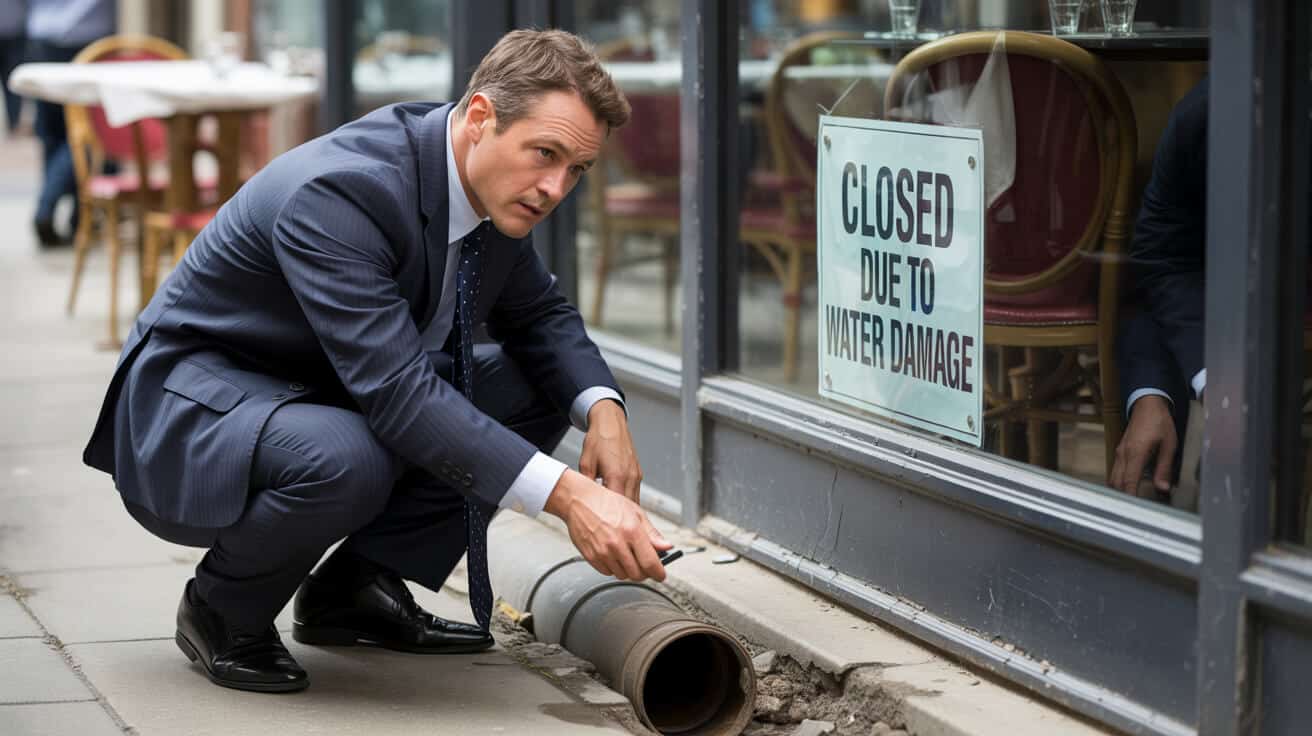
When a Pipe Bursts, What’s Your First Move—and Why Does It Matter?
A burst pipe doesn’t just soak your carpet or ceiling—it floods your credibility as an owner, manager, or agent. In those first tense minutes, you’re judged not by how much water you bail, but by every choice you make: for safety, for loss prevention, for clear claims and quick repairs. The chaotic spray isn’t your real adversary. It’s hesitation, confusion, and the domino effect of missed steps that turn a plumbing emergency into a reputational and legal disaster.
Those first ten minutes after a burst decide whether you’ll be telling a storey of disaster—or one of rapid recovery and cool-headed control.
This section is built to help you do what seasoned plumbing engineers do: turn a burst into a process. By treating the first moments like an open book for stakeholders—tenants, insurance, board members, even buyers in the future—you model exactly the reliability that justifies why people trust you with their property.
The Fastest Way to Control the Narrative: Safety and Action
One misstep in these first minutes—wrong button, forgotten photo, or a skipped notification—can cost you five figures, shake your compliance record, or mean calls from angry tenants and slow-moving insurers for months. Success means moving from chaos to checklist before panic takes root.
Your winning mindset:
- Act like every action could be reviewed in court or by a surveyor.
- Assume every mistake will be screenshotted and sent to a WhatsApp group.
- Use the structure below, and you won’t flinch if someone wants the receipts.
The professional is measured not by the speed of drying out carpets, but by the clarity of their early moves and the evidence trail left behind.
How Do You Secure People and Property Instantly After a Burst Pipe?

Stop, look, secure. Always start with people. Water will do its worst, but electricity and gas are far greater risks—nobody wants to explain a preventable shock or accident.
Evacuation and Scene Assessment: A Step Everyone Misses
-
Get people clear:
Move all occupants, tenants, staff, or bystanders out of the wet zone. For homes, this means pets and children; for commercial, it means staff and guests. -
Isolate the hazard:
Block access to flooded corridors, rooms, stairwells—improvise with signage, bins, anything.
For multi-lets or offices, activate building protocols.
Where water encroaches on electrical boards, plant rooms, or elevators—call for emergency building support. -
Don’t touch electricals:
Assume all sockets, appliances, and switches are live. Never walk across standing water if you can’t see every plug or cable. -
Instruct, don’t improvise:
When helping tenants or staff, tell them not to touch circuit breakers, plug boards, or anything with a cable.
In a burst, water is rarely your only problem—rushed rescues lead to electric shocks, broken bones, and compliance fines.
Immediate Communication: The Asset Owner’s Reputation Shield
- Send an all-clear:
Group chat or call to all residents, users, or staff—make it clear what you’re dealing with and that you’ve got it under control.
- Log the chaos, not just the cleanup:
Take photos immediately, even if you’re embarrassed by the mess. The worst images trigger the best insurance responses.
How Can You Shut Off Water and Stop Damage Multiplying by the Minute?
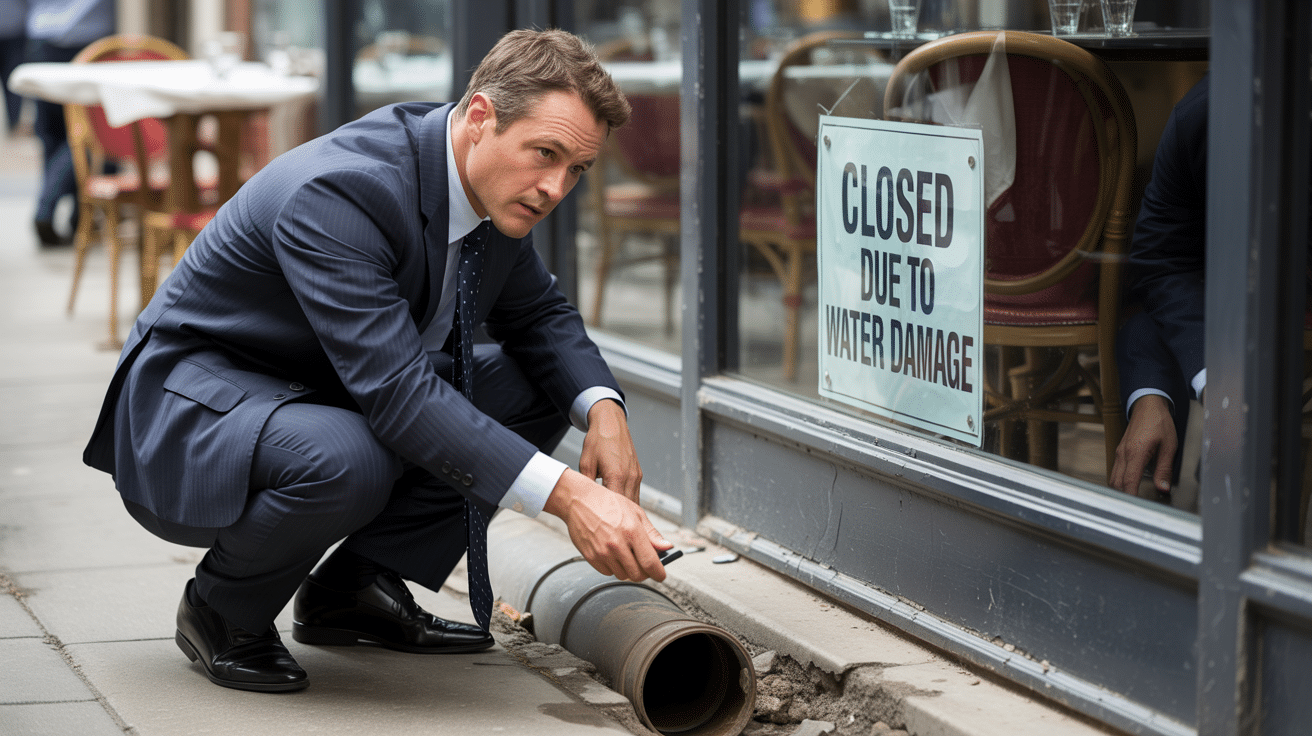
Every second, more water means more cost and more paperwork. Your stopcock is your on-switch for asset control.
Find, Test, and Twist—Every Second Counts
-
Know your stopcock:
Homeowners: look under the kitchen sink, by the front door, or in the garage.
Flats: shared riser, basement, or metre room.
Commercial: plant room, metre cupboard, or outdoor valve. -
Safe to access?
If the area is dry and not sparking, go ahead. If flooded, block access and get professional help. -
Turn tightly clockwise:
If you struggle, drop tools—forcing a valve can break a pipe. -
Log your actions:
Timestamp every shut-off with a phone app or clock.
Insurers, managing agents, and future you will thank you when the “What did you do first?” email arrives.
A stuck stopcock is sometimes worse than a burst pipe—test yours before you need it, or log it if it won’t budge.
What If You Can’t Find or Move It?
- Isolation valves on appliances: Shut them if they’re in reach—it’s not a full fix, but it slows damage.
- Landlords and block managers:
Keep a digital or written record of every property’s valve locations; circulate this before disaster strikes.
What’s the Right Way to Cut Off Power and Gas Without Creating New Hazards?
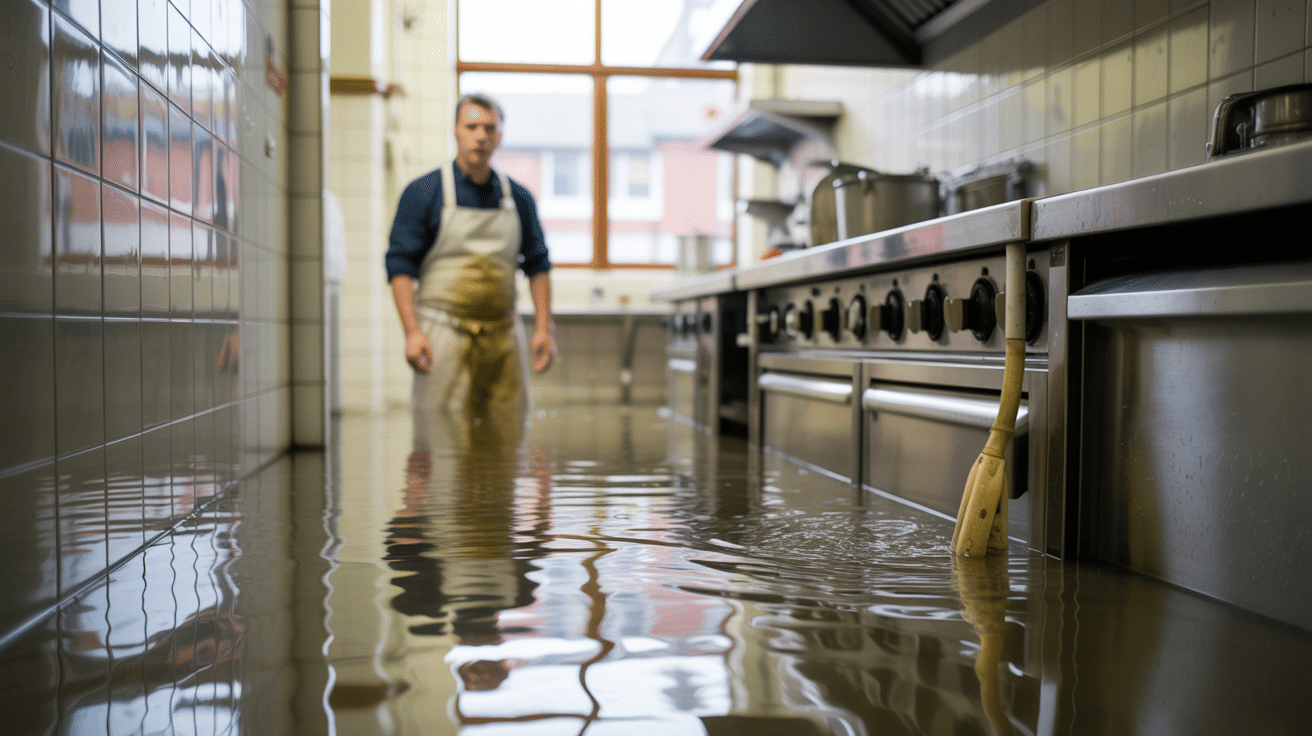
Playing hero with electrical boards or gas levers is not worth the risk. One clumsy move, and you’re liable not just for water damage—but for fire, injury, or loss of compliance.
Electrical Isolation Done Right
- Only touch fuseboards or consumer units if they’re dry and accessible, and you’re confident in their layout.
- When in doubt, leave everything as it is and step out of the danger area.
- Call a qualified electrician or emergency services if needed—document that you did so.
Gas Isolation—Only If It’s Clear and Dry
- Only pull the emergency isolation lever if you’ve used it before and see no water on, near, or under it.
- Do not attempt to move any gas control in a commercial or unfamiliar site.
- Rather, log the risk, notify building management, and call in a certified engineer.
The law cares more about your evidence trail than your speed—the right call is to document, communicate, and escalate.
Notify and Escalate
- Communicate status to agents, owners, or landlords instantly.
- For businesses, use the escalation protocol—email, WhatsApp, internal platform.
- Make a record: “Notified [name], photo attached, time-stamped.”
How Do You Drain Down the System and Limit Secondary Damage?
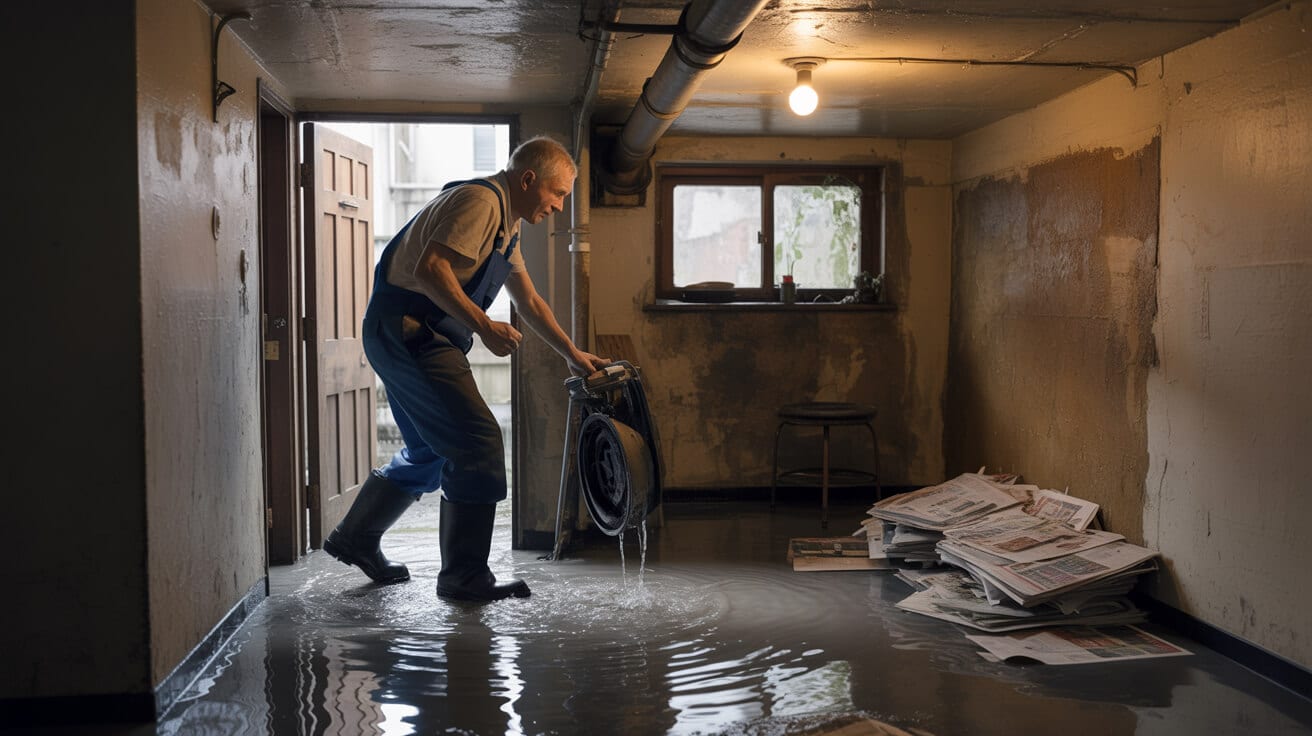
Turning off the mains is half the job—water trapped in pipes, tanks, and systems will keep trying to find an exit until you show it the door.
Stepwise Drain Down, Stratified by System Type
-
Open all cold taps:
Start at the top of the building, work down—it speeds up drainage and lessens pressure in ceiling runs. -
Flush toilets:
Every flush empties a cistern and partial feeds, reducing water weight above eye-level. -
Dealing with hot water systems:
- *Unvented or pressurised (Megaflo, etc.):* Only a G3-certified pro should intervene. If powered off and safe, leave until help arrives.
- *Standard (vented/immersion):* Once mains are off, open hot taps gently, starting with the highest.
-
Don’t bleed radiators unless instructed:
Bleeding can cause pressure drops or introduce air locks—if in doubt, stop. -
Monitor for new leaks:
As pressure falls, other joints or tanks may reveal hidden issues. Log every new leak, even if minor.
Gravity always gets the last word—drain from the top so that the bottom dries quicker and ceilings hold.
Real-World Bonus
Every action you log shortens your claim window. If you’re a landlord or agent with multiple properties, batch-notify your office or contractor network with brief, accurate updates.
How Can You Slow Down Flood Damage—And What Gets Overlooked Most?
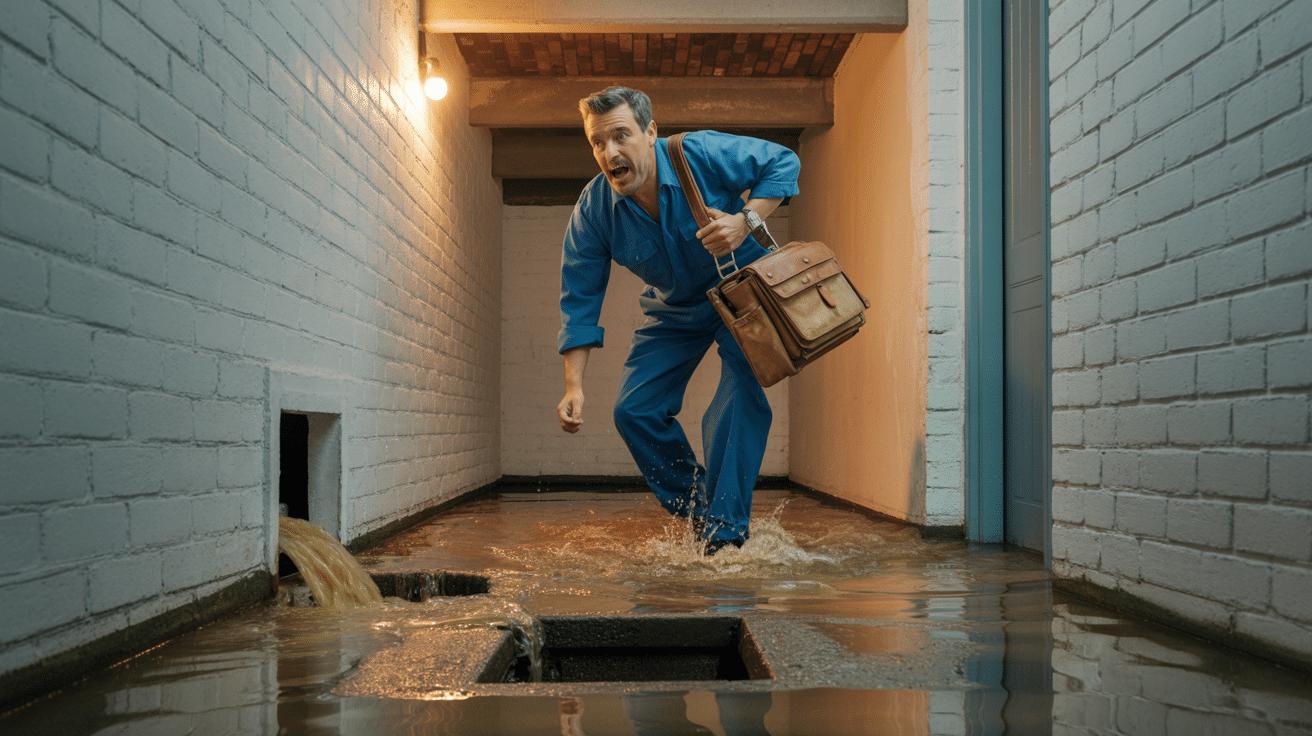
With the water stopped and draining, your reputation is built (or lost) on how you manage what’s left.
Active Containment is More Than Towels and Buckets
- Move valuables fast:
Remove paperwork, electronics, tenant items, or retail displays to a dry area.
- Line and rotate containment gear:
Place buckets, towels, or trays under every drip—rotate them out as they fill.
- Address bulging ceilings early:
If a ceiling sags, carefully pierce a small hole at the lowest point only after confirming no cables or light fittings are in play—direct the water safely into a bucket.
- Photograph everything:
Photos of initial chaos, ongoing drips, and placement of containment efforts matter more than shiny after-pics.
- Temporary barriers matter:
Use anything available—plastic sheeting under carpets, sandbags at doors, wood blocks for furniture legs.
Speed beats style: the best asset managers care more about evidence and protection than appearances in the moment.
Mistakes to Avoid
- Don’t ignore affected floors below—water always moves down.
- Don’t let containment overflow; micro-floods impress no one on a video call with loss adjusters.
What Documentation Wins Insurance Claims and Keeps Compliance Tight?
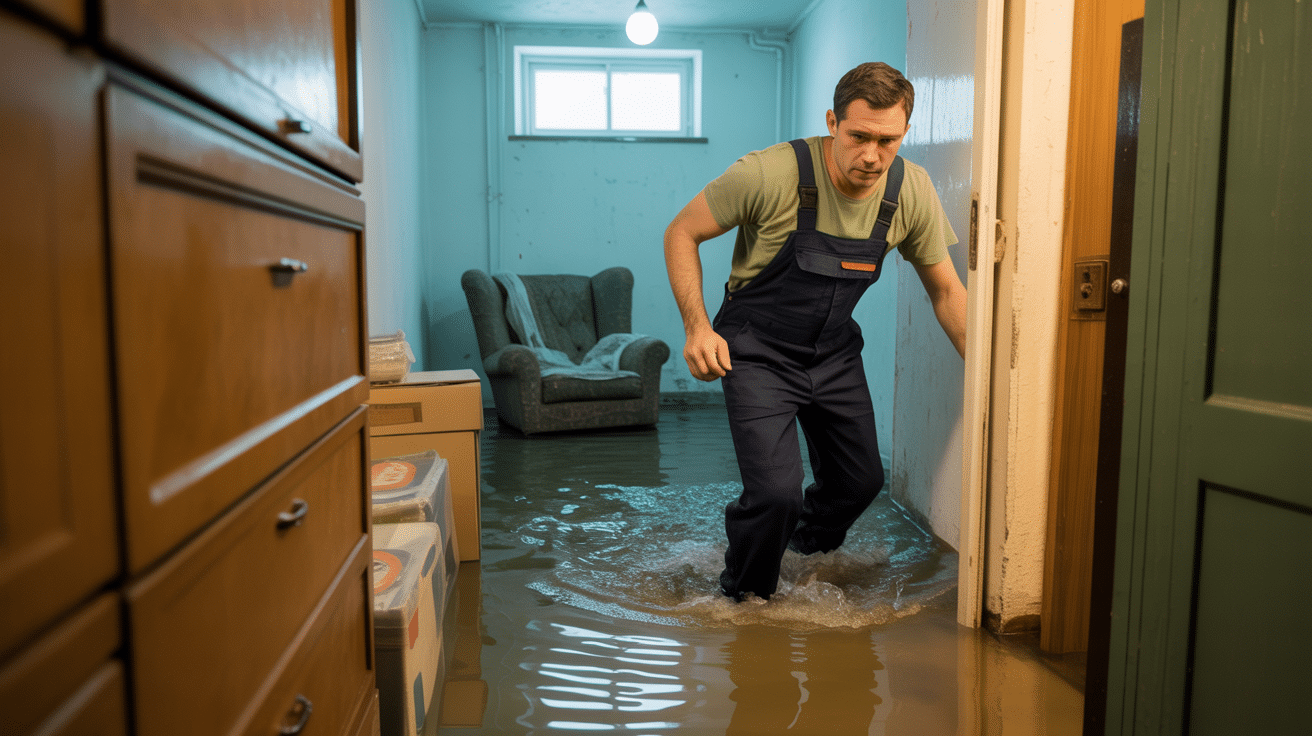
When you’re competing with dozens of claimants, your outcome depends on one thing: clarity and completeness of your evidence. Auditors can overlook a missed mop, but not a sloppy log or mushy timeline.
Build an Irrefutable Timeline
- Capture at least three stages:
Initial discovery, after shut-off, after containment.
- Use both photos and written logs:
- Source and spread of water
- Each isolation or action step
- Items saved, losses incurred
- Video proves speed and seriousness:
Walk the site; narrate your actions.
- Time-stamp everything:
Proof of response time is a claim’s best friend.
Share with Intent
- Email your insurer or agent immediately—don’t rely on call logs.
- Keep records in a shared drive or property platform for later audits.
- Commercial or multi-tenant: Send each manager or block supervisor the evidence pack.
Insurers fight ambiguous claims—give them a photo-storey they can’t dispute.
Legal Layer
- Log communication with residents, staff, or building management.
- Document external support calls: plumber, electrician, engineer.
- Keep all receipts for emergency purchases—mops, clamps, even tea for residents.
Why Do Credentials, Compliance, and the Right Engineer Change the Outcome?

Not all plumbers are equal. Hiring on a whim can sabotage insurance, violate UK law, and leave you exposed to future penalties.
Demanding Credentials Isn’t Just Smart—It’s Required
- Only use WRAS-Approved, WaterSafe Registered, G3-Certified plumbers for system or cylinder work.
- For multi-lets, commercial, or managed blocks: insist on evidence and signed paperwork before a tool is raised.
- If a contractor arrives without visible credentials, G3 or WRAS badges, or can’t log their work: pause and escalate.
Engineer Protocol: What They Need from You
- A summary of your steps so far (valves closed, leaks spotted).
- Your evidence logs.
- The risk map for the property: who’s in, vulnerable areas, key systems, hazards.
- Contact and authority lines for approval: landlords, managing agents, or safety reps.
Engineer Protocol: What You Get in Return
- Isolation testing and confirmation of all shut-offs.
- Stepwise diagnosis and fix—with part numbers, documentation, and after-photos.
- Formal paperwork and compliance reports, ready for insurance and regulatory review.
- Advice on preventing future incidents, including insulation, lagging, or scheduled checks.
Credentials don’t just fix the pipe—they log the evidence and compliance that gets you paid and protected in the aftermath.
Why Do “Shortcuts” With Burst Pipes Become Catastrophic Later On?
False speed feels good but guarantees regret. Skipping logs, ignoring final checks, or hiring uncertified help creates a bigger, hairier problem—one that shows up in denied claims, fines, or even asset devaluation a year down the line.
| Missed Step | What Seems Faster | What Goes Wrong Next Year |
|---|---|---|
| Shut off water later | Less disruption now | Subfloor damage, structural mould |
| Skip photos/videos | “Too busy for admin” | Lower/fought payout; failed resale |
| Use any local plumber | “Saved money today” | Warranty-void, legal risk, audit loss |
| Ignore certificates | “Nobody will check” | Denied claim; compliance violation |
| Rely on memory/logs | “I’ll remember stuff” | No proof, payout refusal, stress |
Denials, fines and un-saleable property are all built on ‘I’ll fix it later’ shortcuts.
Being able to verify and narrate every step, and build a compliance pipeline from chaos, is the single most important late-impact prevention tool you have.
What Do You Gain With Plumbers 4U—And How Is the Next Emergency Different?
A plumber isn’t just for tightening joints; they are your partner in reputational management, claims success, and compliance protection.
Plumbers 4U: Your Asset’s Safety Net
- Real human engineer, 24/7. No chatbot, no subcontract shuffle.:
- Attendance in as little as 60 minutes—faster when you specify “insurance claim priority.”:
- From the first phone call, all steps are documented, photo-verified, and delivered by WhatsApp or email (your preference)—futureproofed for claims.:
- Landlords, block managers, commercial supervisors: Receive a stress-tested compliance checklist and a future risk prevention plan after every job.
- Homeowners: Walk out with maintenance tips and a “What to Do Next Time” asset checklist on your phone.
How It Works, Step By Step
- You call/text/message.
- Engineer contacts you instantly—no call centre limbo.
- Arrival, isolation check, cause tracing, job photo log.
- On-site fix and clean-up, paperwork signed.
- Documentation sent, insurance and compliance-backed.
The fastest asset recovery isn’t just a promise—it’s structured, documented care and diligence that future-proofs every home and property.
If you want to be the owner, agent, or manager who always turns emergencies into minor blips—one call or message to Plumbers 4U is the difference.
Frequently Asked Questions
Why does immediate action matter when a pipe bursts in your property?
Time is a powerful multiplier in a burst pipe emergency—minutes of delay can mean thousands lost through soaked electrics, structural damage, and weeks of restoration. Anyone present, whether property owner, tenant, agent, or maintenance lead, should race to cut off the water at the main stopcock. In most UK properties, that valve hides under the kitchen sink, in an entry cupboard, or within utility risers in larger buildings. If you can’t locate it, staff, neighbours, or building managers should be involved at once—waiting for permission or credentials is how leaks become floods.
Water never waits for paperwork. Act first, document everything, and trigger your response tree.
Once supply’s isolated, prevent secondary outages by unplugging electrics—never touch fittings with wet hands or when floor contact is damp. Snap photos and text a brief update to insurers or senior contacts; this demonstrates due diligence from the outset. Landlords and agents: empower everyone using your sites by walking through stopcock and fuseboard locations at handover, not just in a PDF no one reads. Place emergency contacts prominently, not in an email chain lost to time. Plumbers 4U’s engineers often find the biggest loss isn’t water, but lack of local knowledge in that first panicked moment.
What habits make a rapid response possible even for non-technical occupants?
- Photo guides of stopcock and fuseboard near main doors or kitchen
- Five-minute verbal run-throughs with each new tenant or contractor
- High-vis emergency numbers posted at eye level—not buried in files
- A ready-to-share WhatsApp message or checklist in the winter
Where do you find and maintain the main stopcock or valve, and what if it fails?
Stopping water at its source requires knowing not just where the valve lives but how to keep it working. In UK homes, it’s usually under the kitchen sink or where water enters; in flats, try communal risers or plant rooms. Commercial users—know your main boundary tap location and who holds keys or codes. If the valve is stuck, don’t risk force; a sheared spindle can let water pour out unchecked, multiplying damage and warranty headaches.
The valve that isn’t tested is the one that jams under pressure, risking insurance fights you’ll never want.
Schedule manual stopcock checks every six months, tagging results and fixing problems early. Owners and agents must ensure visible marking, periodic testing, and log maintenance dates in onboarding docs. Where valves are inaccessible or a backup is needed (e.g., at metre pits), document layout and emergency access process, and be ready to call water utilities for metre-side cuts, acknowledging time lags and claimant hurdles in such cases.
What proactive steps ensure everyone can shut off water quickly?
- Label all isolation valves, main, and secondary (e.g., for tanks) using colour tags or clear stickers
- Practice turning valves with both on-site and remote support present—rotation confirms readiness
- Maintain a backup plan, including location of the boundary tap and contact for utilities access
- Replace seized or corroded stopcocks promptly, noting part swaps for compliance
When is it safe to isolate electrics after a leak or burst—and what steps limit danger?
Water and live electricity are never friends—any intrusion puts people and property at risk. If you see water encroaching sockets, switches, or appliances, do not use hands or touch metal—try to run to a dry room to flip fuses or trip the RCD. If the area is wet or inaccessible, step back and trigger the alert protocol for an emergency electrician. Plumbers 4U’s engineers routinely encounter hidden dangers: water seeps behind walls, making DIY isolation guesswork at best, fatal at worst. Regulations (HSE, BS 7671) demand you never approach switchgear in wet environments.
One uncertain move at the fuseboard can turn a clean-up into an intensive care admission—prioritise evacuation over bravado.
Site managers and landlords must teach staff, tenants, and contractors the “step out if in doubt” rule, display electrician numbers, and confirm RCD tests are logged yearly. Larger properties with complex circuits should flag high-risk areas and prebrief on escalation plans.
How do you train and inform all building users for electrical safety?
- Place bold “no entry—risk of shock” signs by affected areas after any leak
- Maintain an up-to-date emergency electrician contact list at every fuse point
- Cover safe isolation in every induction and handover, stressing not to act if standing in water
- Annually certify RCD and surge protection—confirming via maintenance logs
How should you drain a water system properly after isolating the supply?
Simply closing the stopcock is half the fight—what’s left in your pipes and tanks can spill and soak for hours without proper draining. Begin by opening all cold taps at the lowest point first and work upward, letting air displace water and pressure. Flush toilets to empty cisterns. hot water systems vary: if unvented/pressurised, never touch hot taps unless you are G3 certified—dangerous pressure and warranty issues lurk. With combi boilers, always shut off electrical power before running taps; interfering with the heating side can damage controls or void claims.
In bigger, multi-storey, or commercial properties, draining requires system-level knowledge—consult your plumber or facilities contact before taking action. Each litre bled by tap is stress you won’t face in the flooring or plaster.
Emptying every outlet you can is the difference between a quick fix and three months of damp repairs.
Which building setups need a specialist for safe draining?
- Unvented or pressurised cylinders (e.g., Megaflo): only G3-certified engineers are permitted to work
- Combination boilers and thermal stores: turn off power, drain only if you know the setup
- Complex commercial properties with tanks or multiple risers: consult site diagrams and always coordinate with maintenance/construction leads
Why do insurance companies reject claims over slow responses or uncertified repairs?
British insurance and loss adjusters are unwavering: they insure methodical, properly evidenced action, not well-intentioned guesswork. The most common claim denials follow poor record-keeping, use of non-accredited contractors, or delays in both shutdown and escalation. Each gap gives insurers an “out”; call logs, dated photos, and receipts from WRAS, WaterSafe, or G3 technicians are your only leverage if challenged.
Insurers care about traceability. Your repair was only as good as its logbook, credential, and timestamp.
Digital and physical backup of every document, job sheet, and correspondence is vital—not just for major works, but for any “make safe” steps. For managed/leasehold blocks, escalation trees and communication logs must be maintained and periodically shared with all stakeholders.
What documentation truly protects your claim or asset value?
- Ensure any substantial or risk-prone repairs are WRAS, WaterSafe, or G3 certified, with paperwork to match
- Photograph and date every stage: the leak, action taken, and final outcome
- Store receipts, warranty cards, and site reports centrally (including cloud storage)
- Property and facilities managers should maintain a communications log between all involved parties—insurer, owner, tenant
How does using certified professionals and proper logging drive successful outcomes post-burst?
Credentials are the property world’s safety net—WRAS and WaterSafe registration, plus G3 certification for unvented cylinders, are more than badges; they are your legal and financial security. Only certified engineers’ paperwork is counted by insurers, warranty providers, and, crucially, future contractors or surveyors conducting upgrades. Top plumbing teams (like Plumbers 4U) do more than fix—they document, explain, and support you past the crisis, including routed communication with agents or loss adjusters for stubborn claims.
Expect a granularity of documentation: part numbers, before-and-after photo logs, sustainability of sourced materials, and a written explainer for your own knowledge or to pass along to the next owner. Skipping this is a false economy—six months later, you may face a bill or a compliance headache no one explains.
The only shortcut worth taking is hiring someone accountable on paper, every single time.
Which deliverables should you always request at every repair or emergency call-out?
- Credentials presented up front—never be shy to ask for engineer ID and relevant certificates
- A thorough written report listing all used materials, replaced components, and actions taken
- Professional photos attached to your digital or paper logbook for continuity
- Tailored aftercare instructions and direct support for next steps—even communicating on your behalf if possible
Plumbers 4U brings insurance-ready, fully-certified emergency and routine repairs, with all job logs, compliance paperwork, and aftercare included for UK owners, landlords, and building managers. When your property’s future is on the line, only expert documentation and credentialed action stand between you and major disputes.
Copy, share, or circulate this recovery guide—it’s how smart property stewards prevent chaos and turn contingency into certainty.
